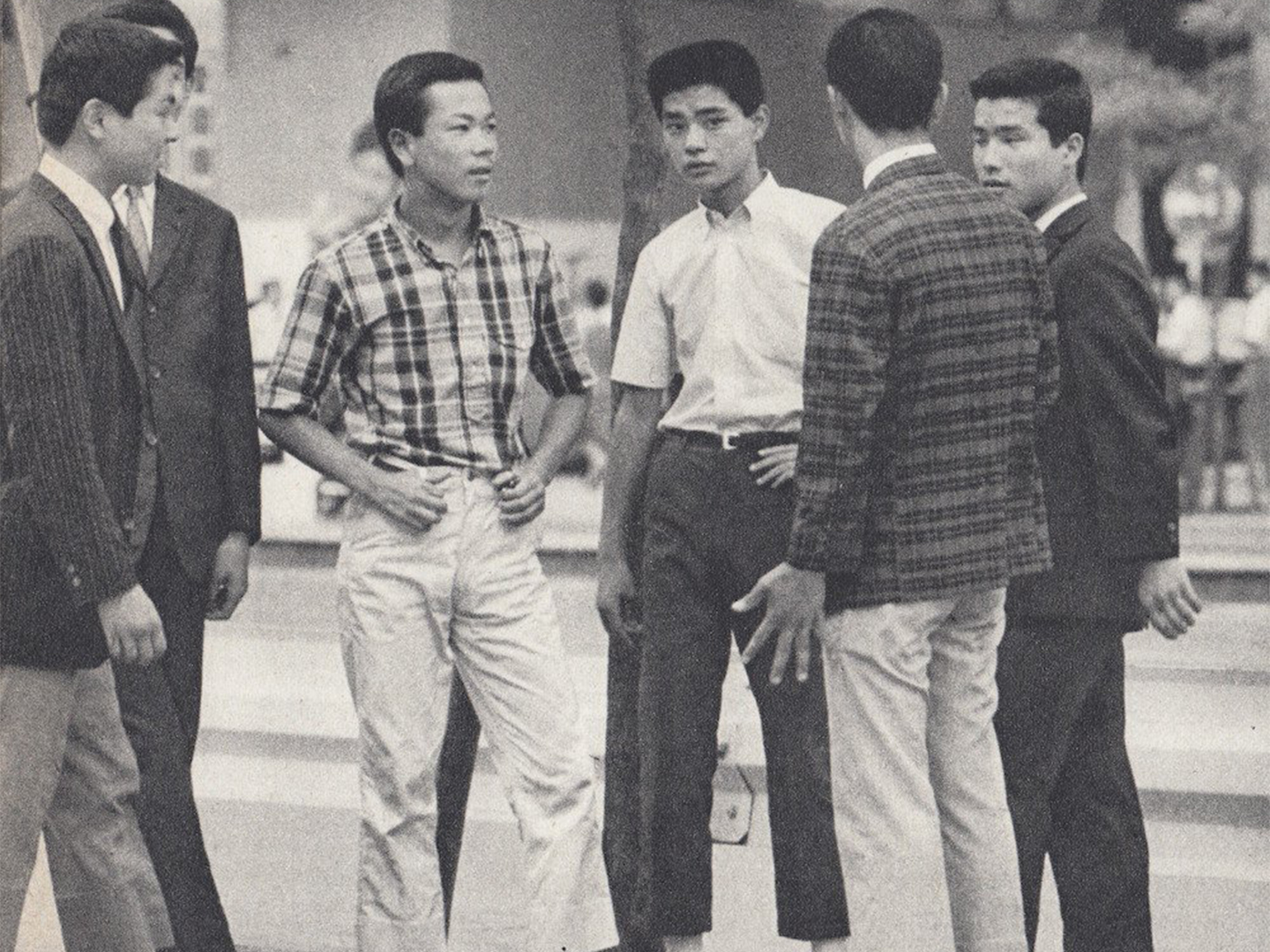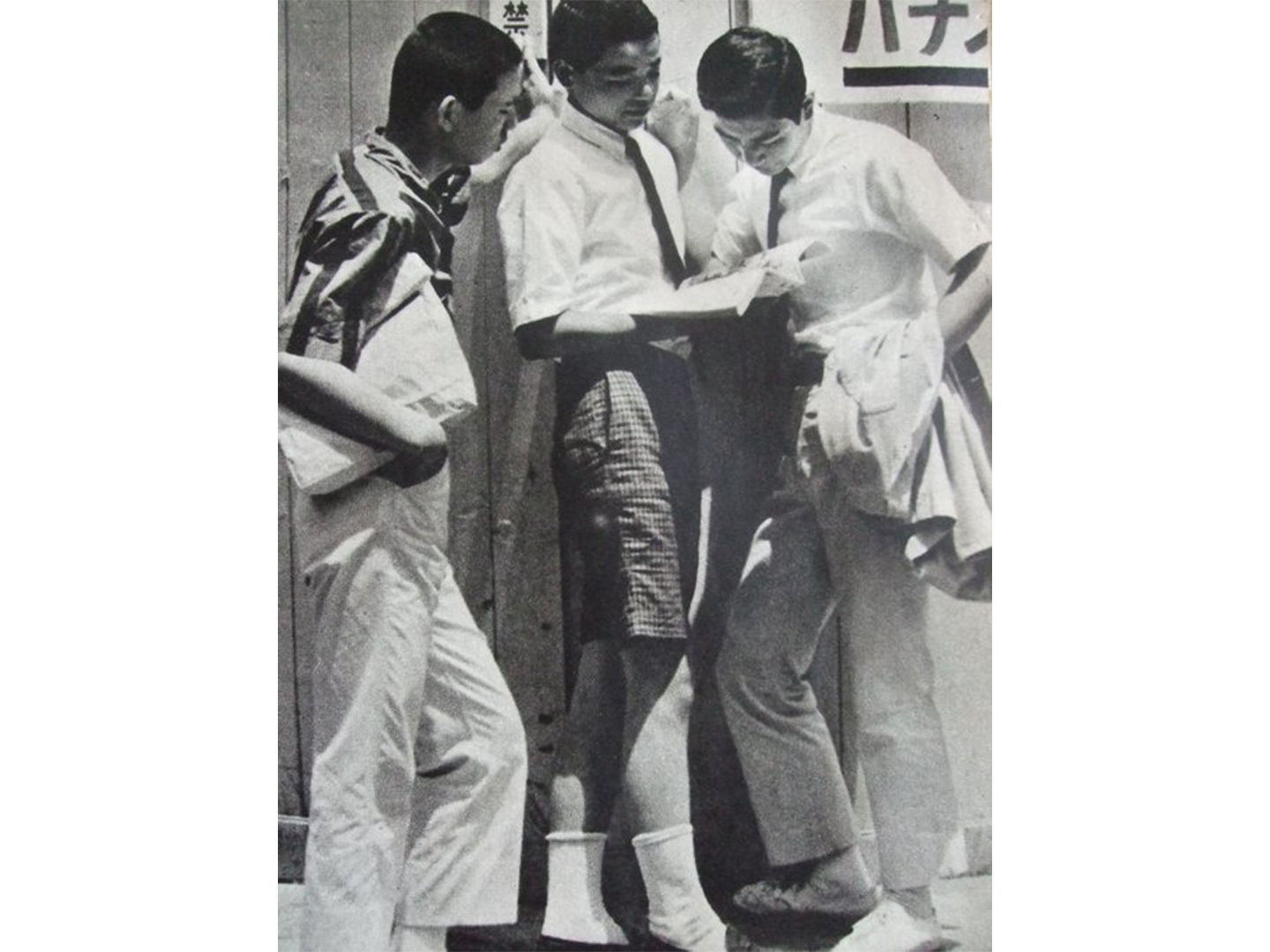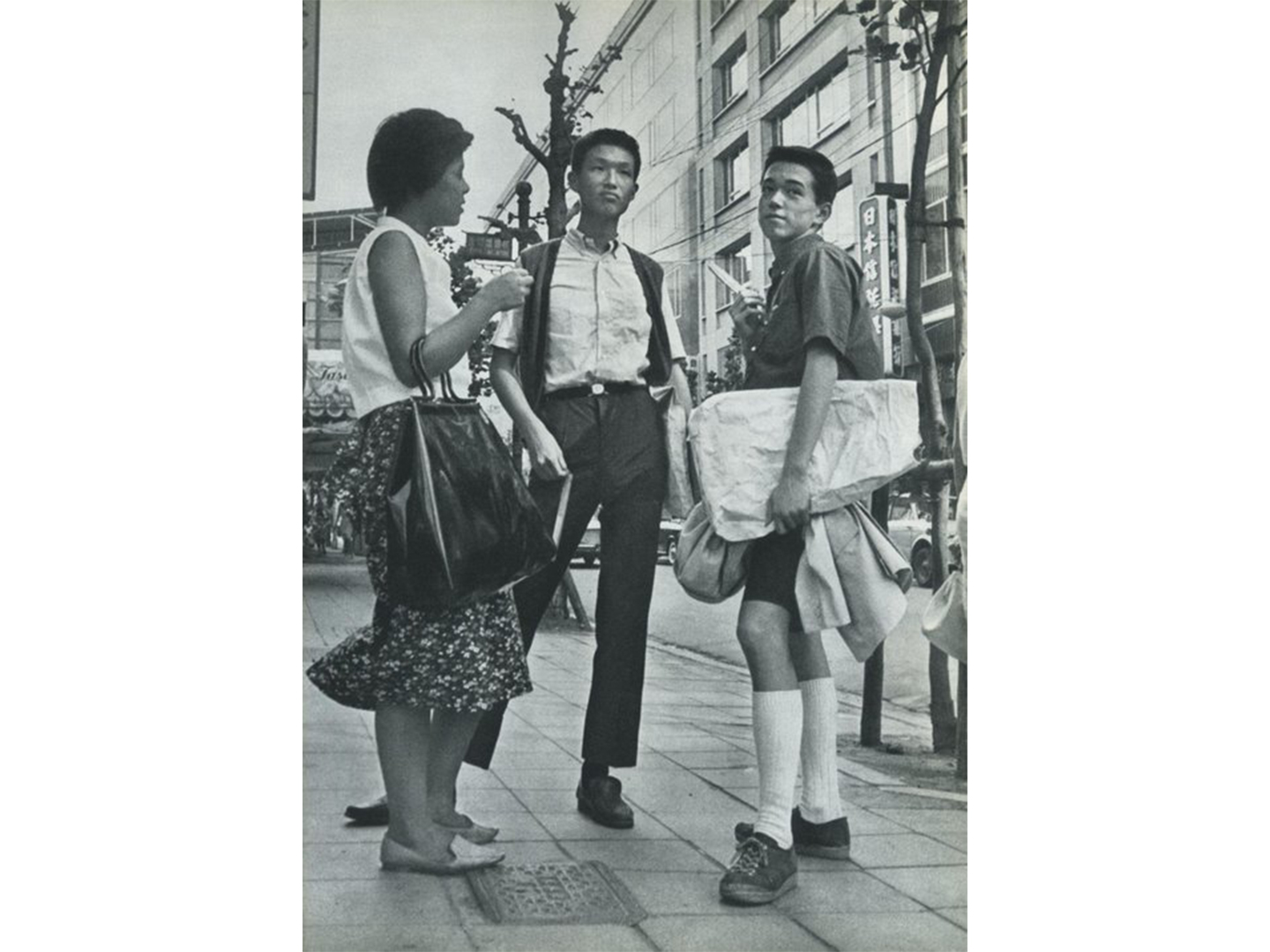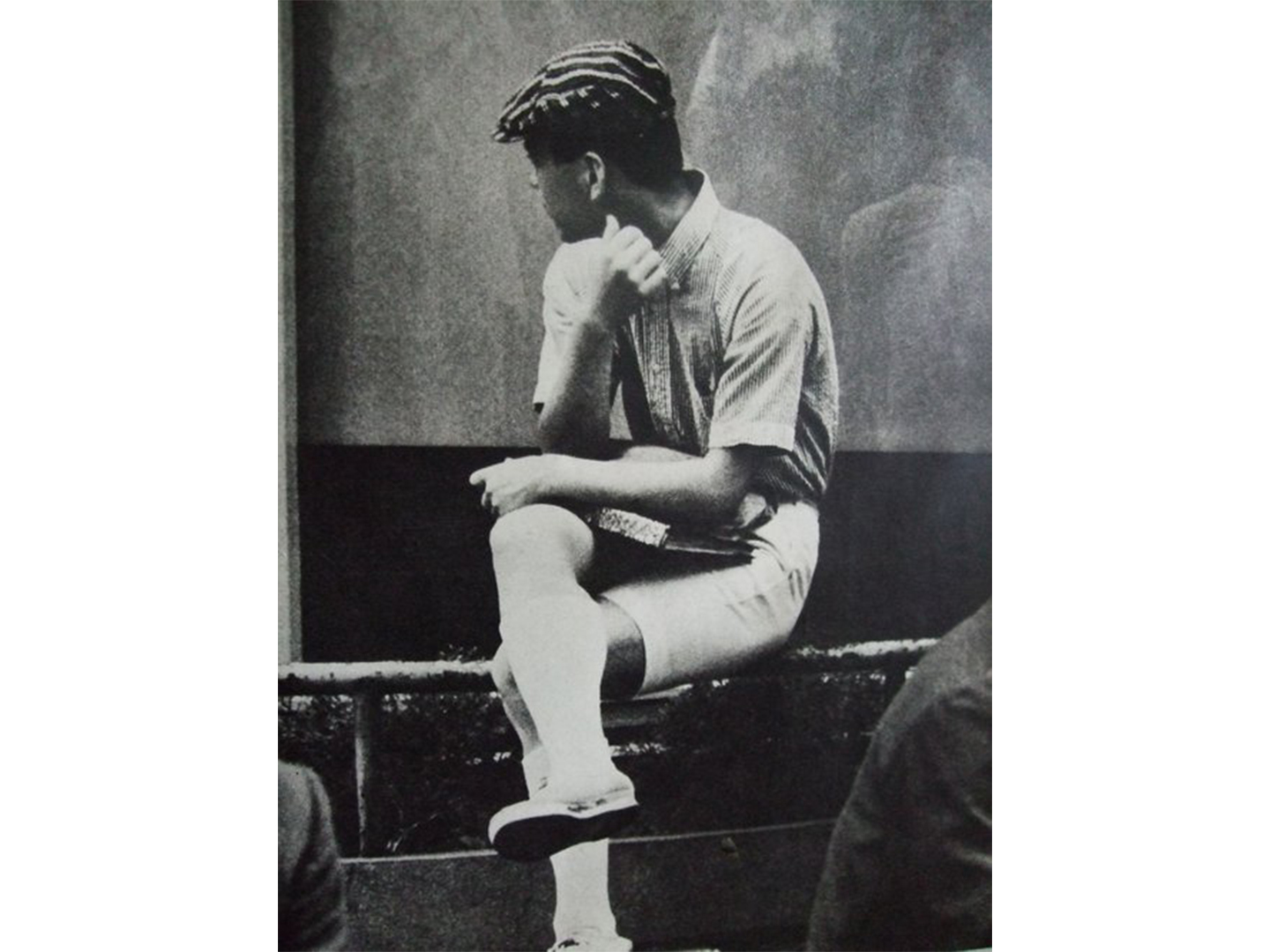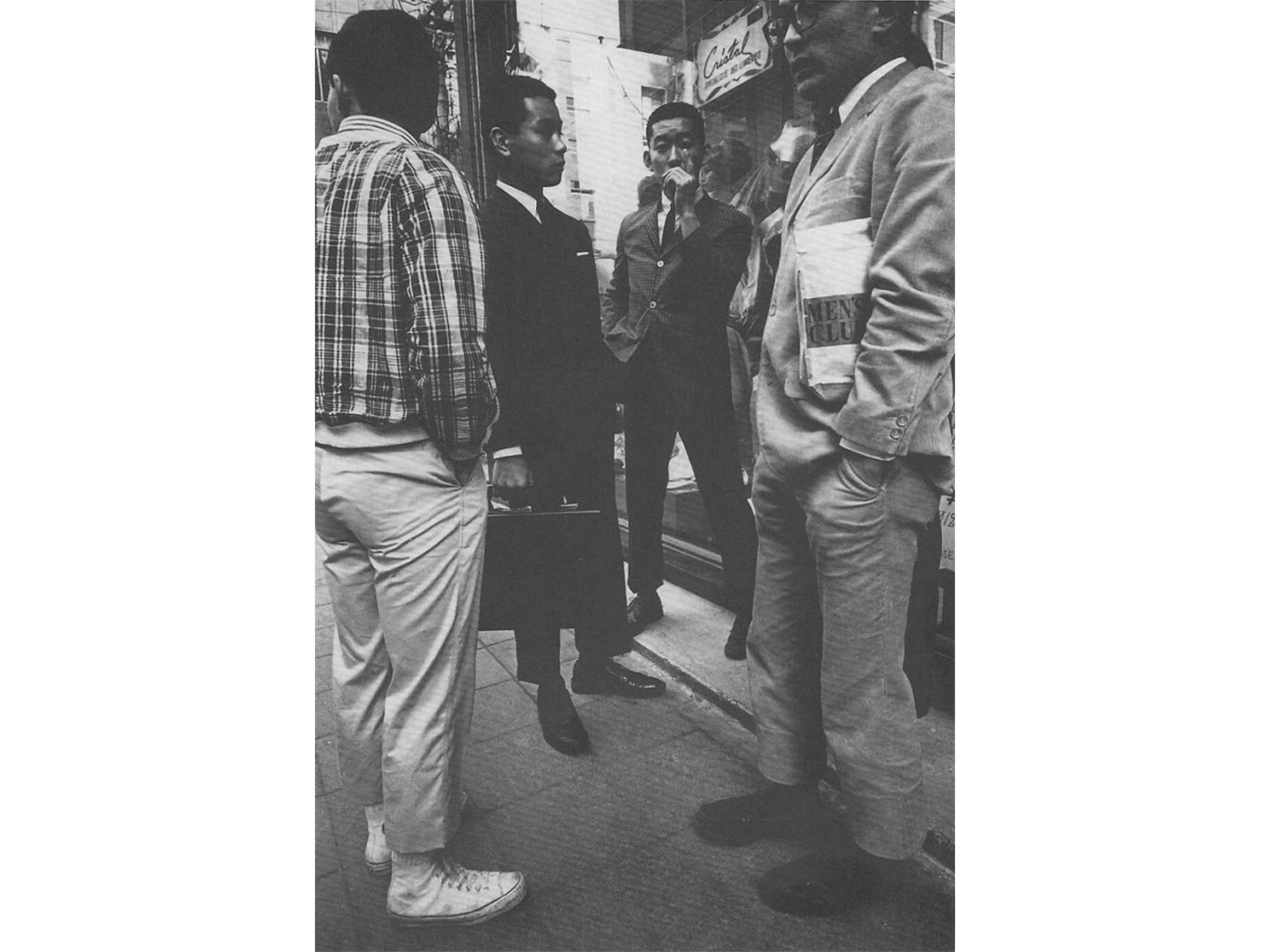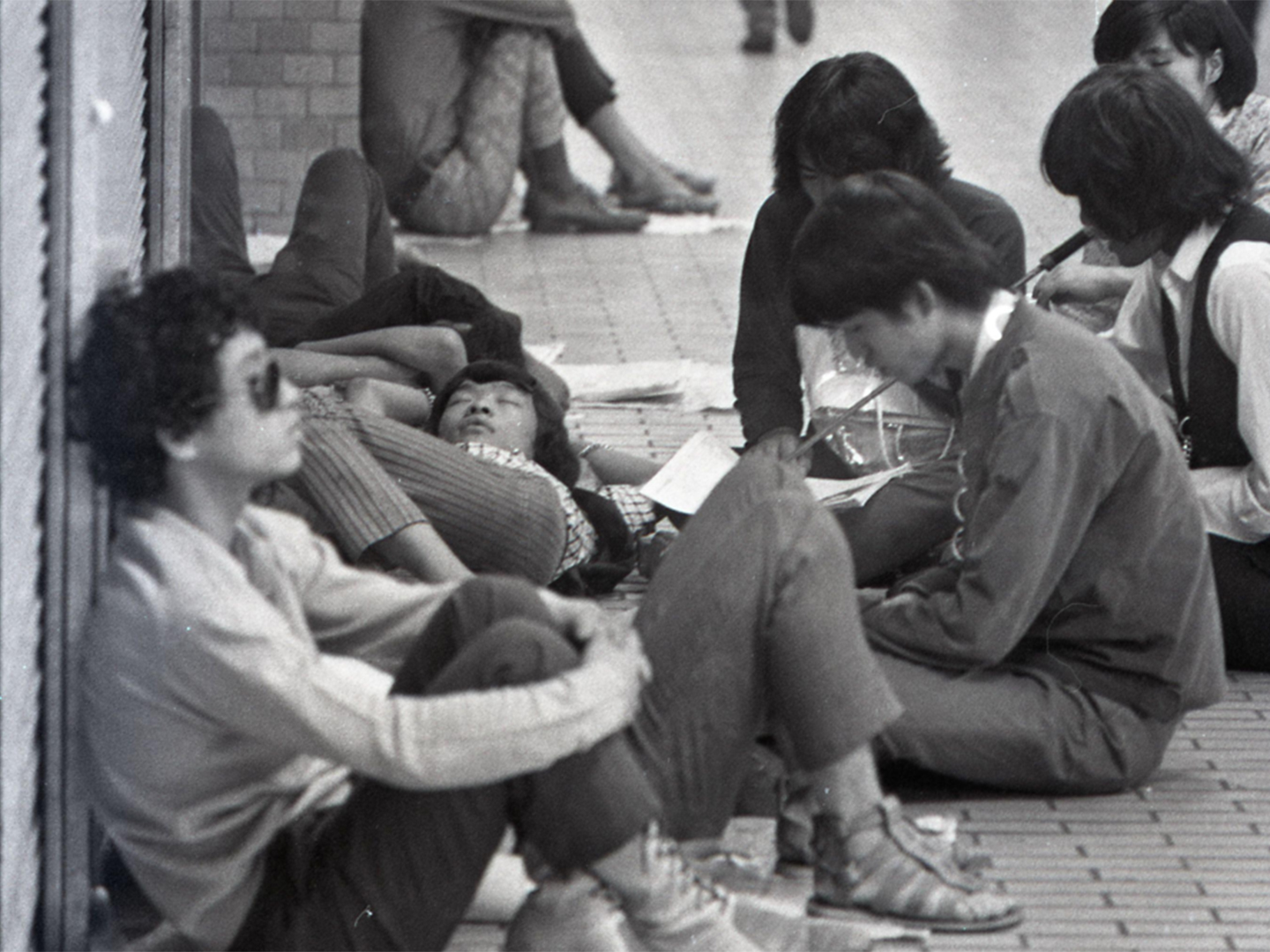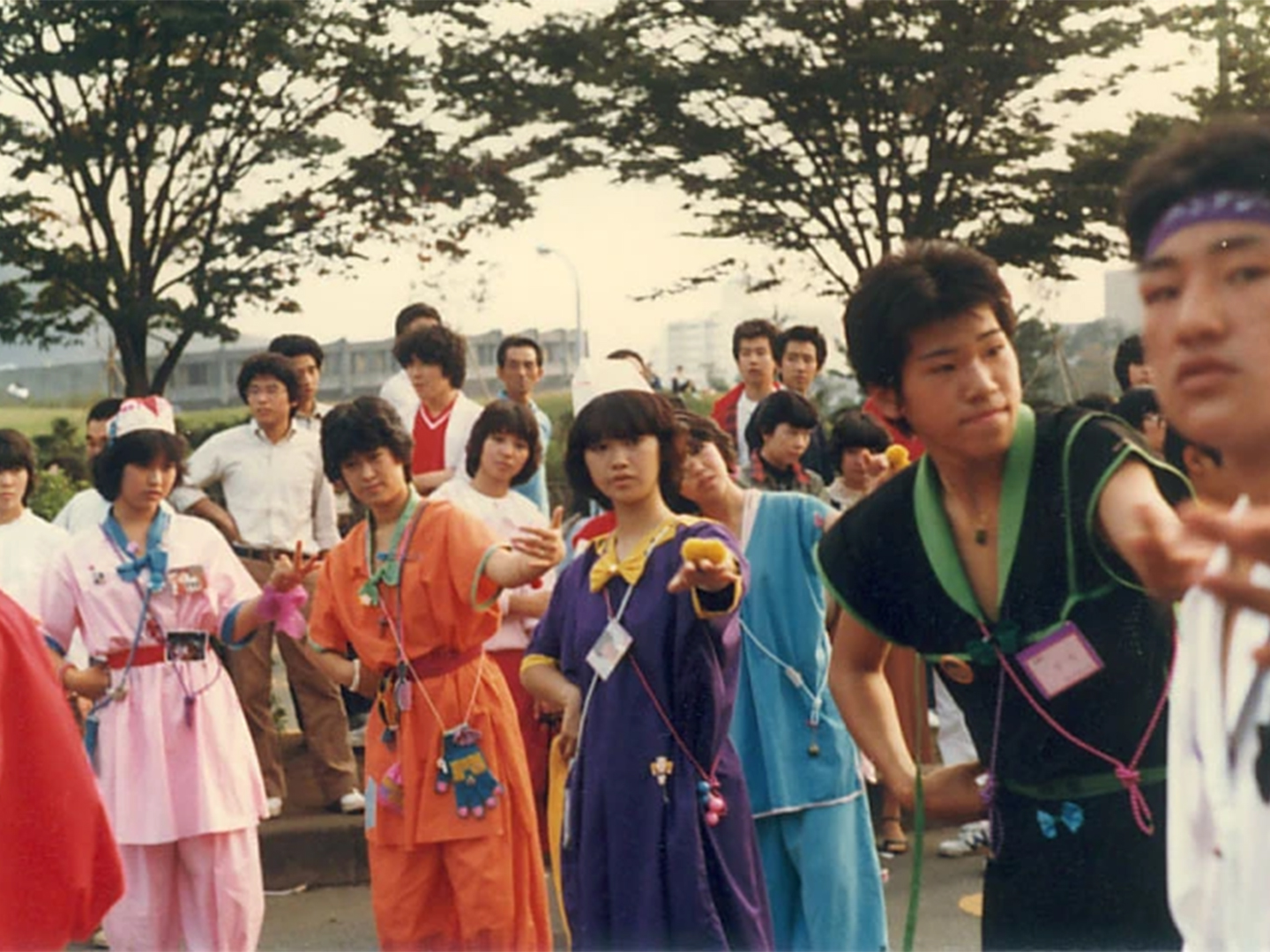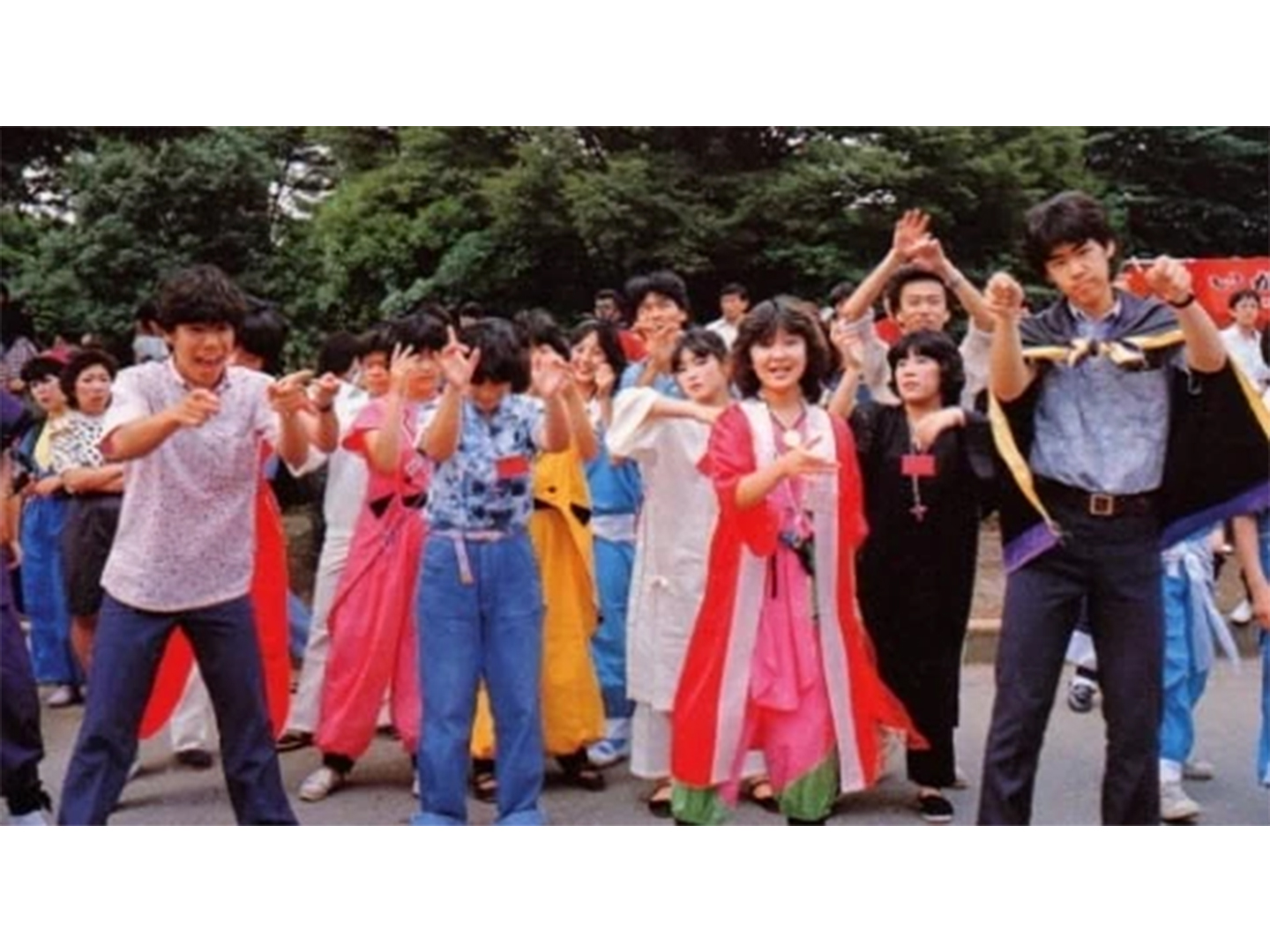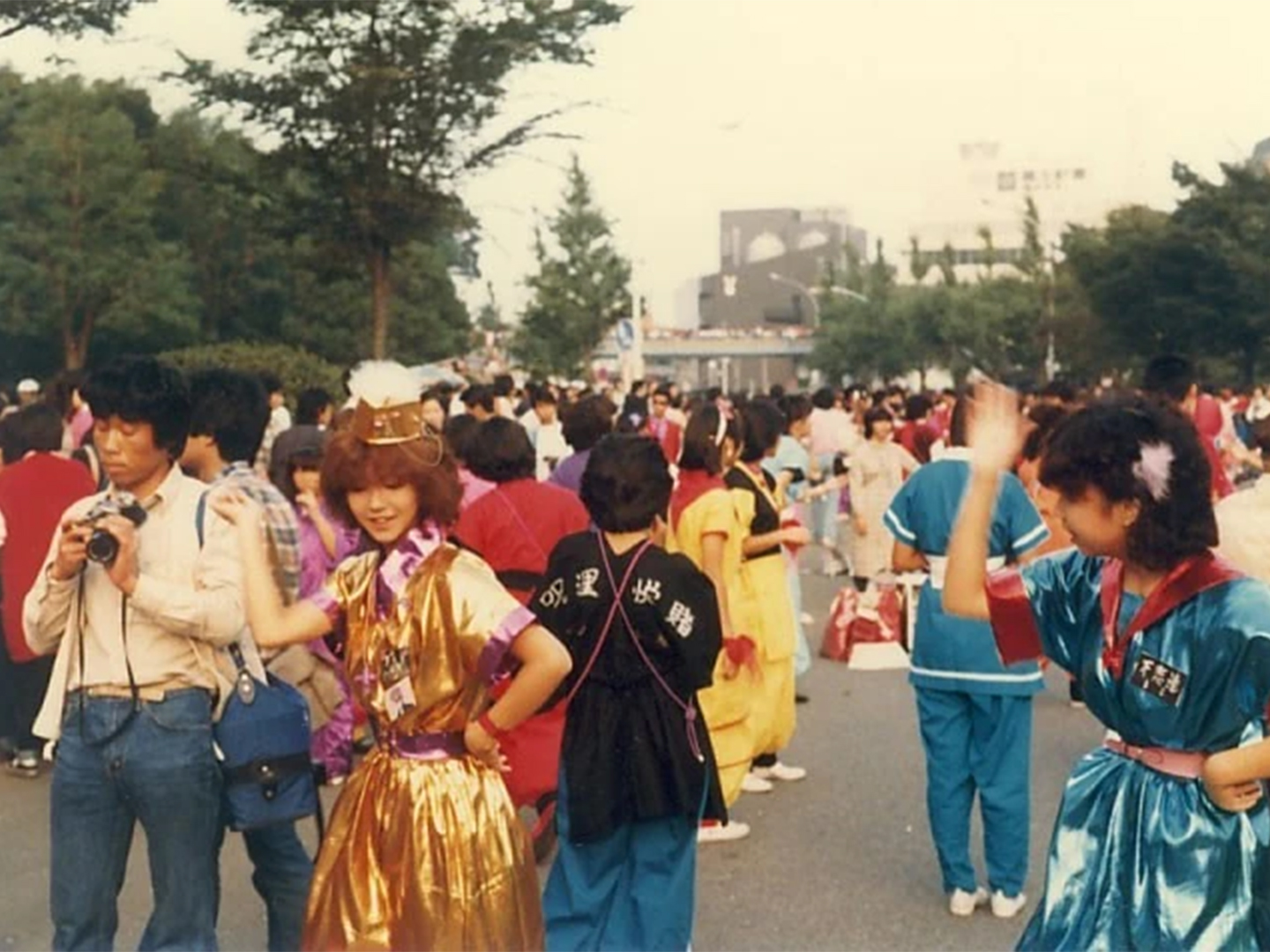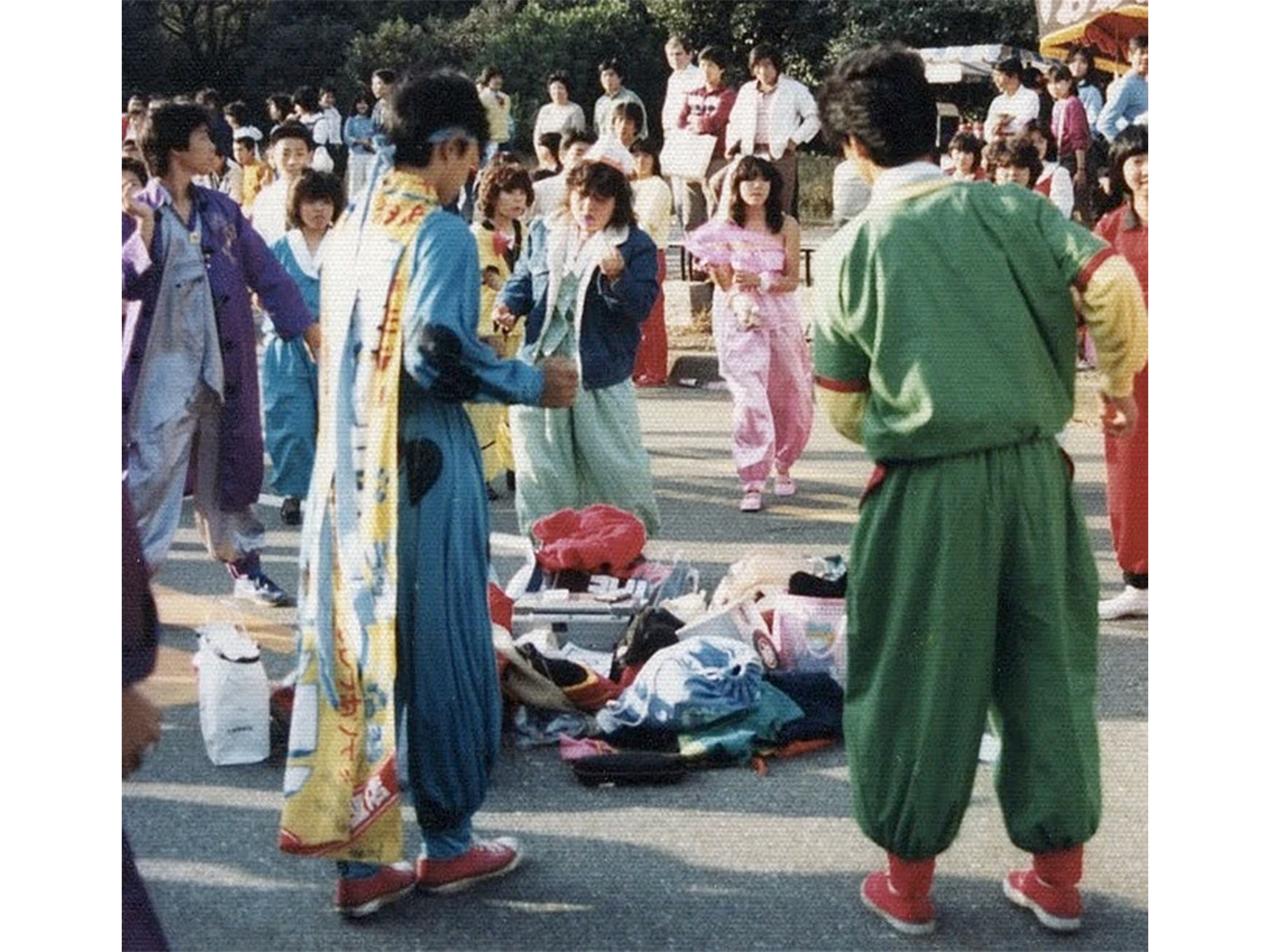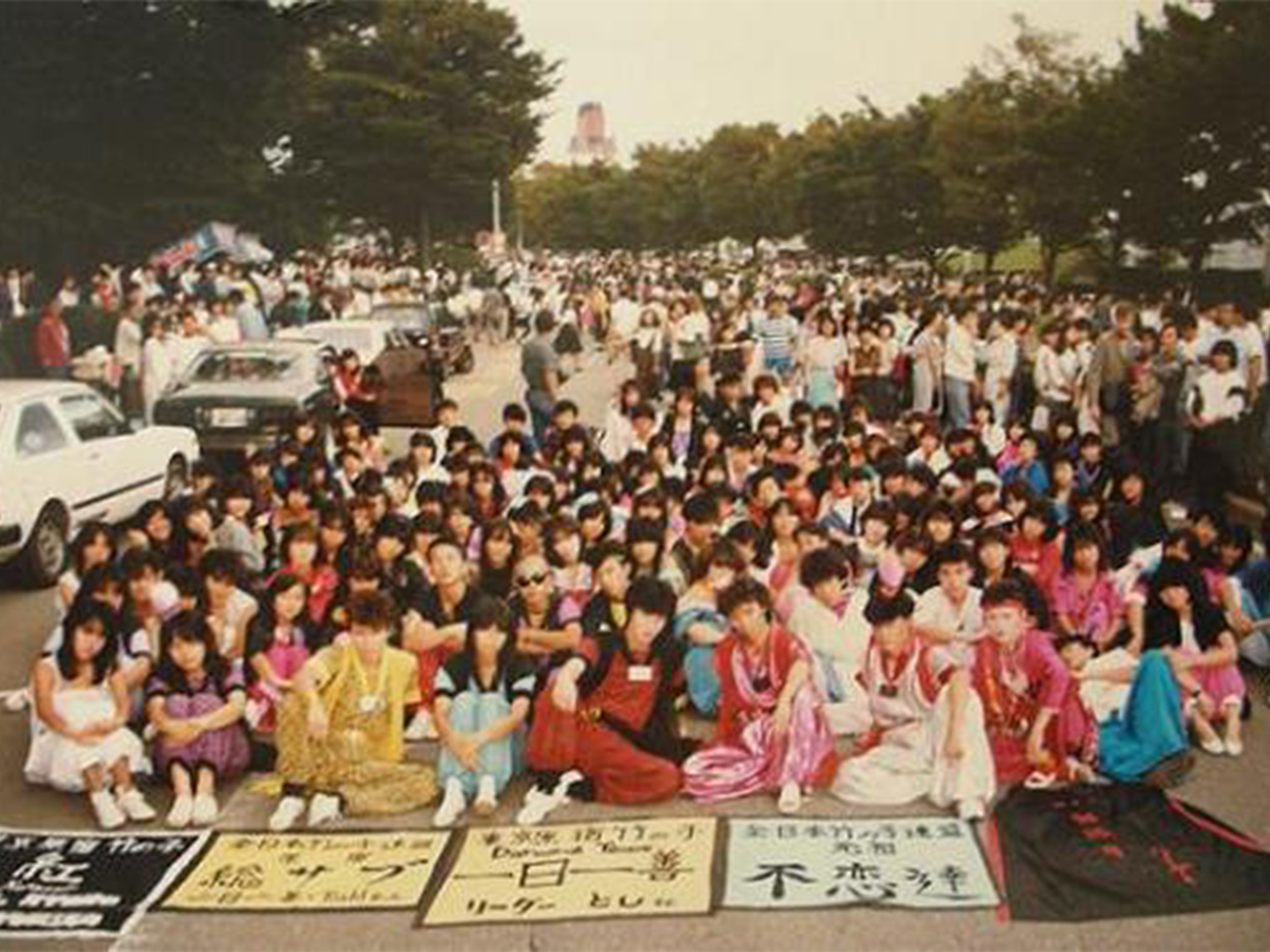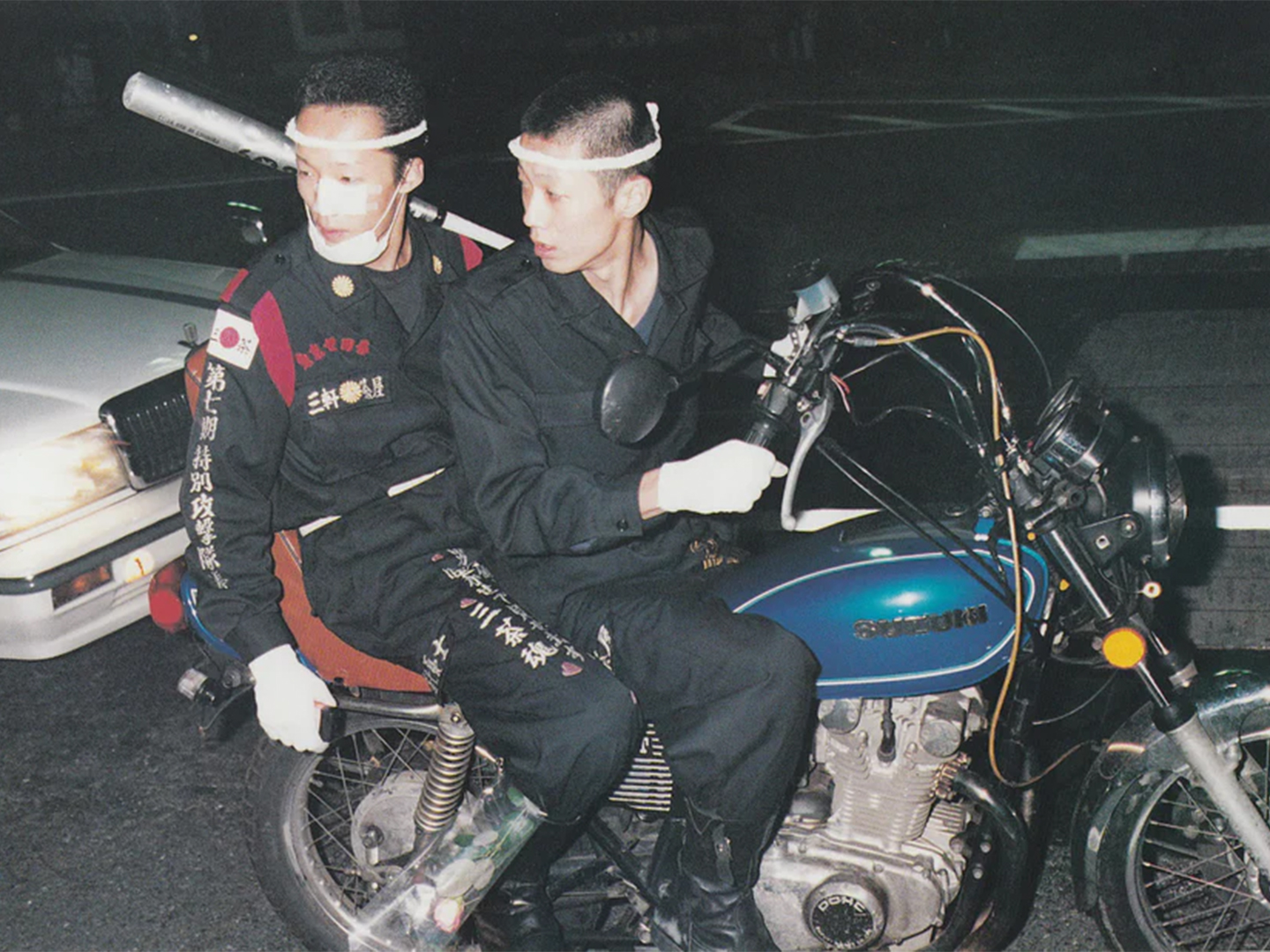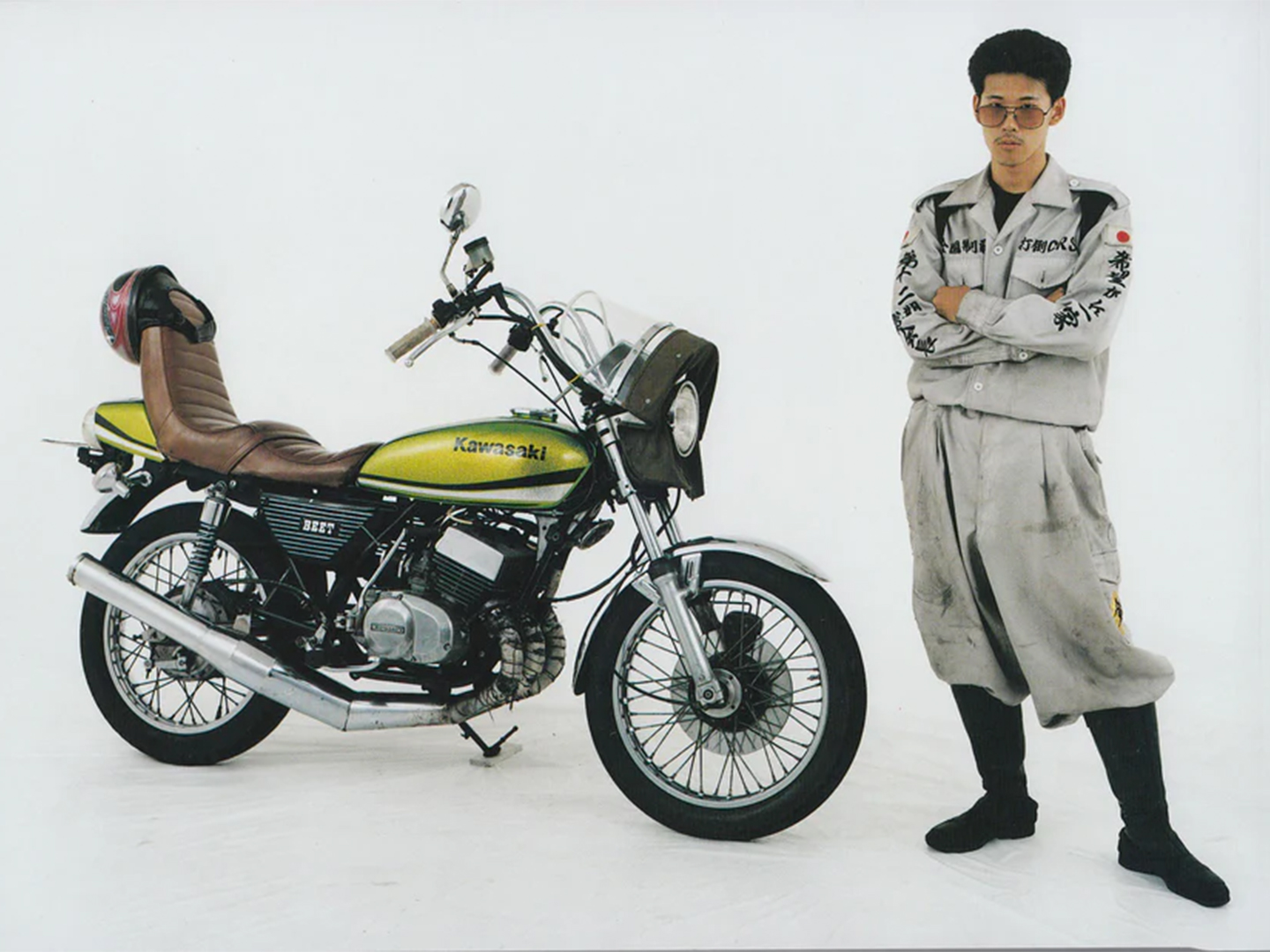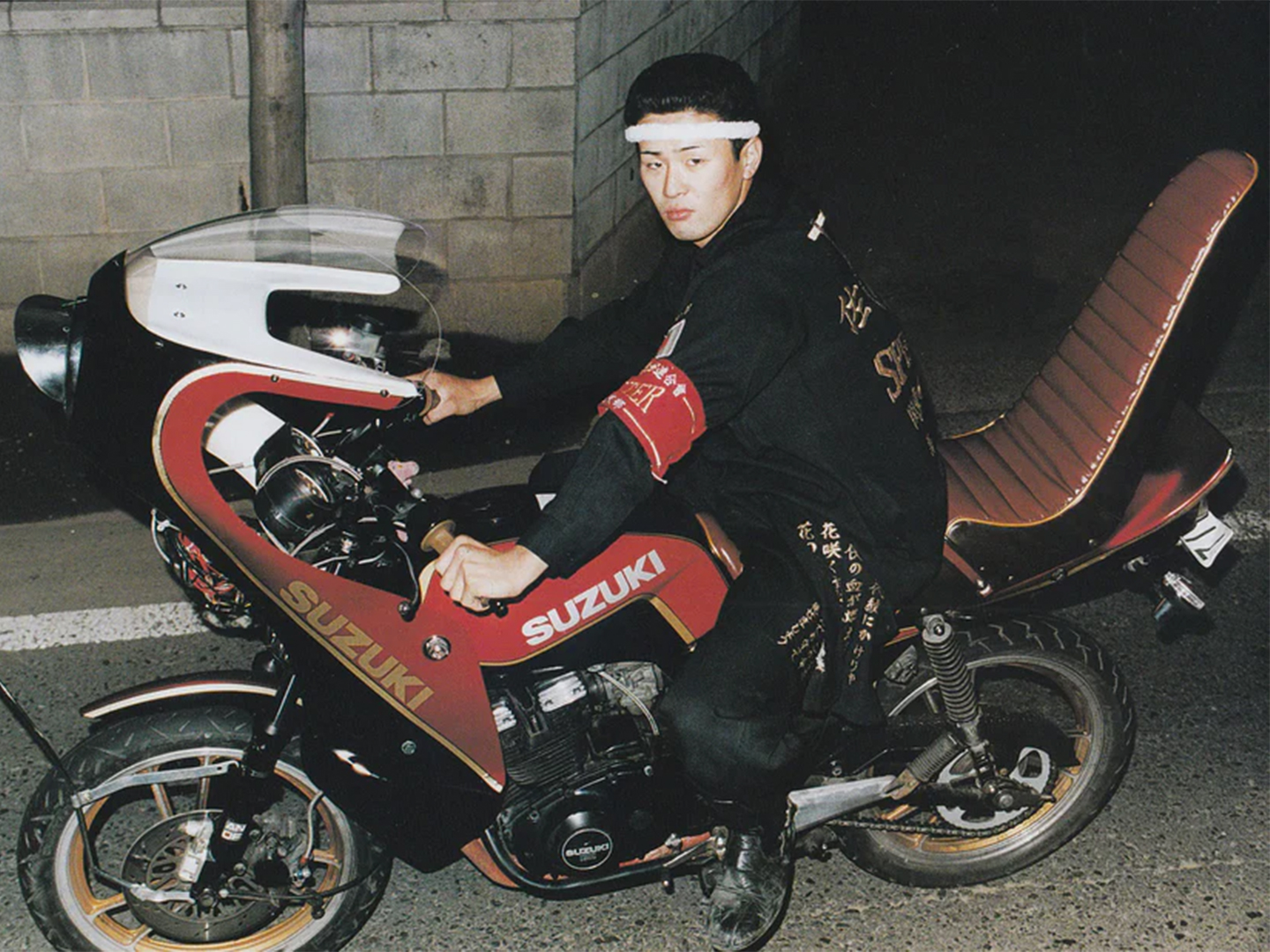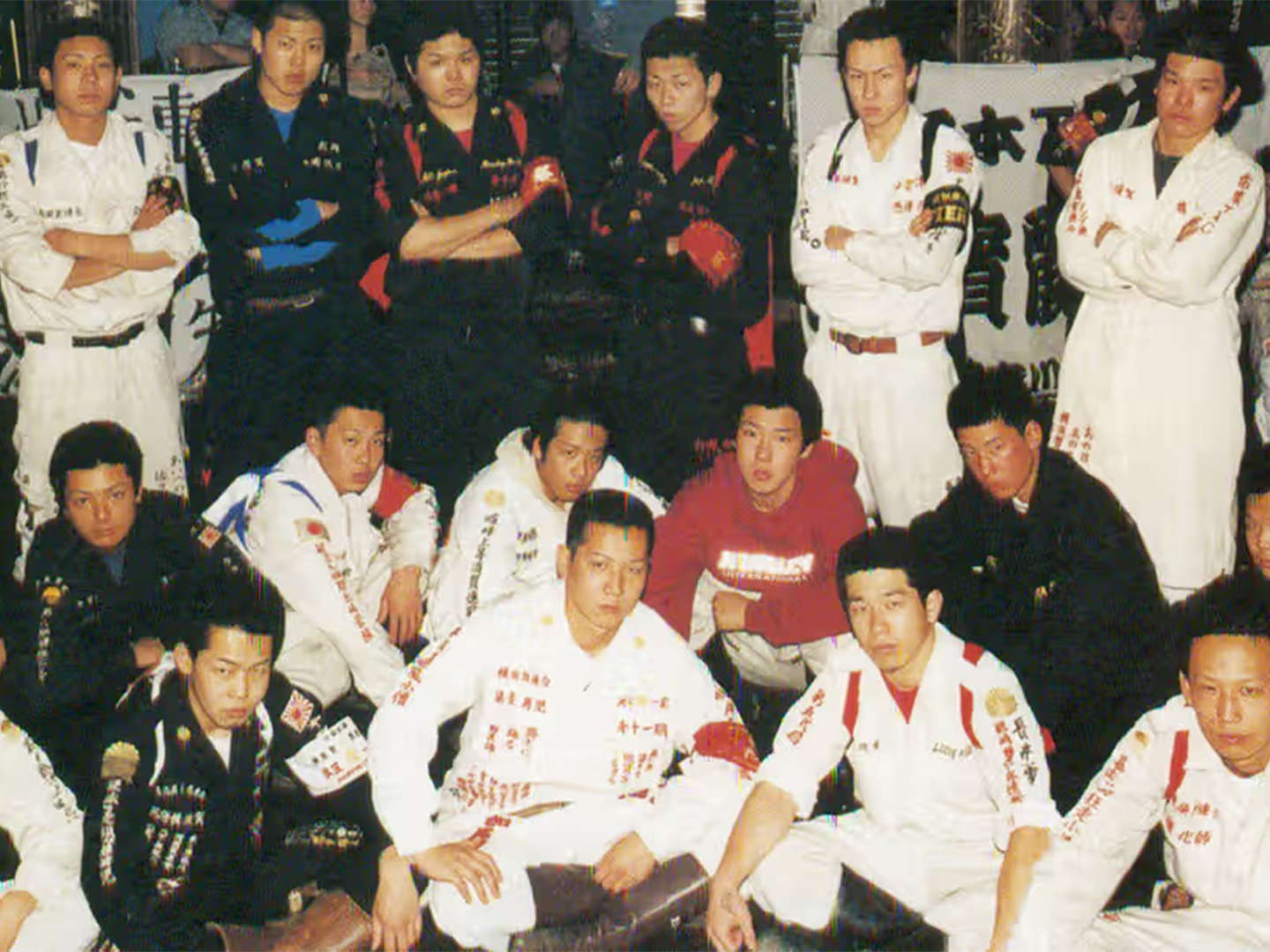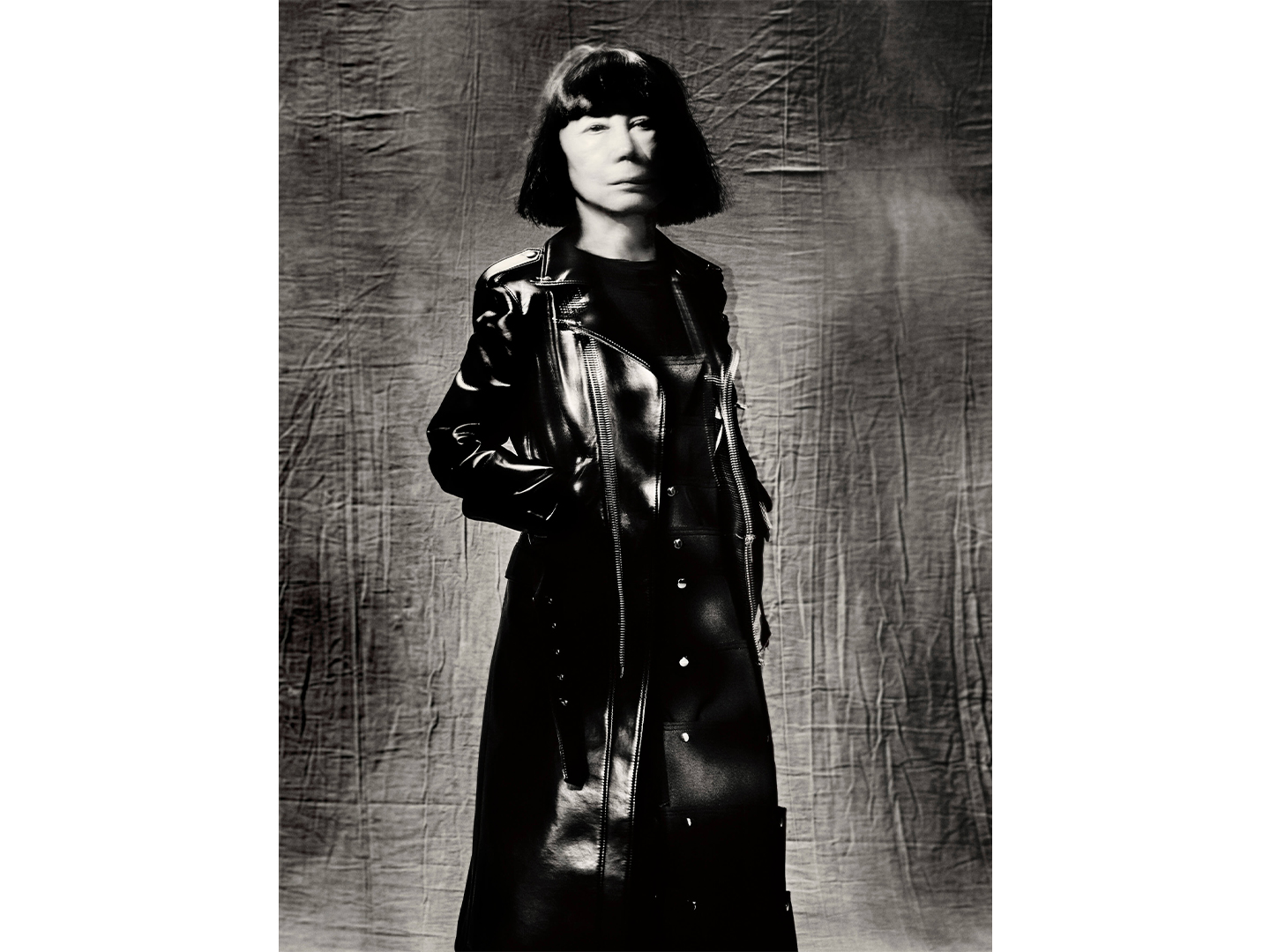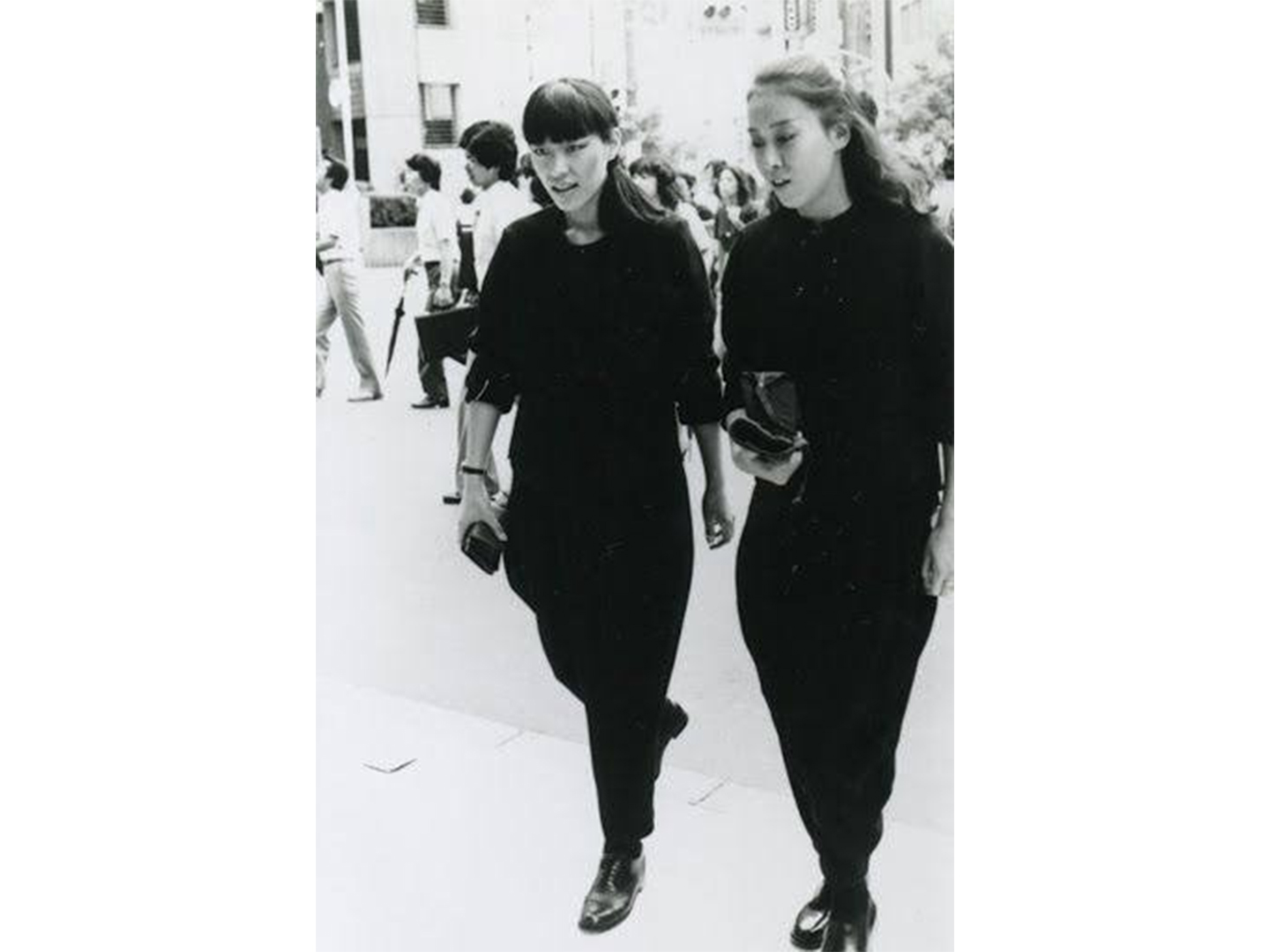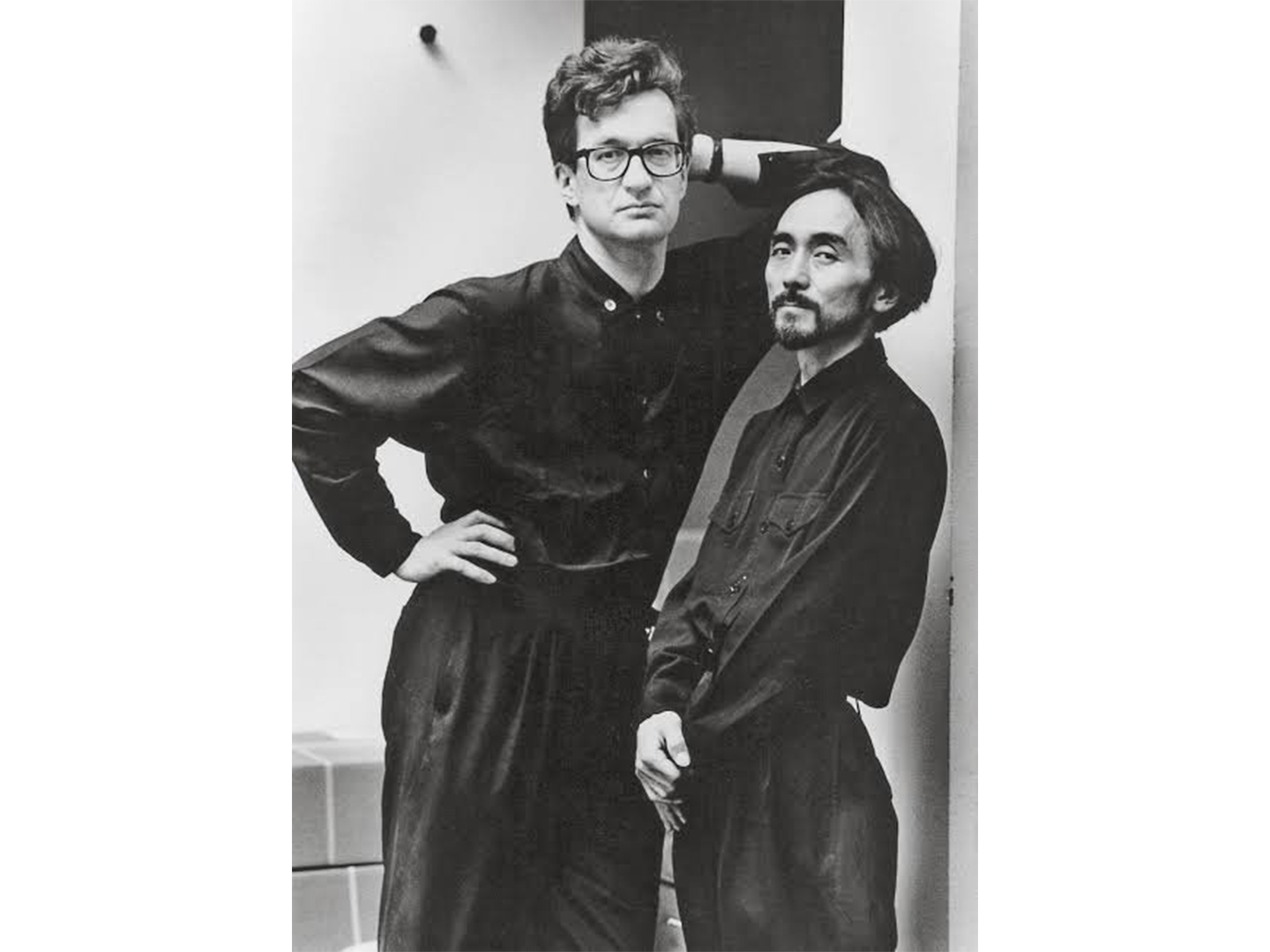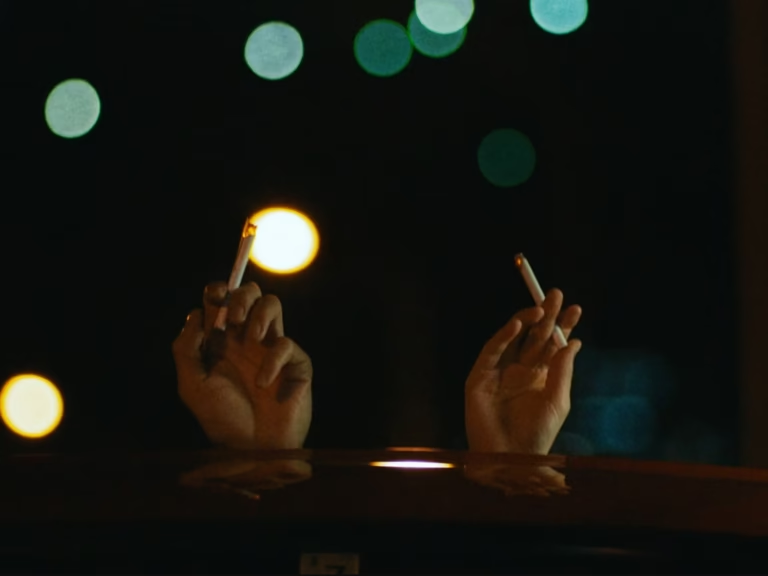Throughout the late 20th and early 21st centuries, youth subcultures in Japan developed distinct styles that influenced fashion, public space, and identity. Some gained international attention, while others remained local and short-lived. Though they are no longer a visible part of everyday street life, many of these movements continue to inform design, photography, and cultural reference points. This article looks at five subcultures that helped define specific moments before stepping away from view.
1. Miyuki-zoku
Ivy style on the streets of Ginza
In the summer of 1964, groups of fashion-conscious teens began gathering on Miyuki Street in Tokyo’s Ginza district wearing Ivy League–inspired outfits. Button-down shirts, high-water chinos, and penny loafers—often from the brand VAN Jacket—defined their look. Known as Miyuki-zoku, they were some of Japan’s first visible youth fashion tribes. Though their public gatherings were short-lived due to police crackdowns ahead of the Tokyo Olympics, the style went on to influence mainstream menswear for decades.
2. Fūten-zoku
Wandering youth and anti-establishment style
Emerging in the late 1960s, Fūten-zoku were a group of urban drifters influenced by Western hippie and beatnik culture. Centered around places like Shinjuku’s West Exit plaza, they wore bell-bottoms, military jackets, sunglasses, and long hair—rejecting Japan’s postwar work ethic and academic pressure. More than a fashion, it was a stance: unstructured, non-material, and quietly resistant. Often misunderstood, they represented a shift in public youth identity before fading in the early ’70s.
3. Takenoko-zoku
Street dance and family flair
Active mainly from the late 1970s to the mid-1980s, Takenoko-zoku were youth dance groups known for performing in the pedestrian zones of Harajuku. Wearing brightly colored, gender-fluid clothing and wide-legged pants or skirts, they danced to portable cassette players in coordinated routines. Many groups included both boys and girls and were led by a “family head.” Their style leaned heavily on DIY fashion and a sense of joyful spectacle. The movement faded as street performance crackdowns increased and new trends emerged.
4. Bōsōzoku
Motorcycles, uniforms, and group identity
Bōsōzoku motorcycle gangs developed a strong visual presence beginning in the 1970s, defined by customized bikes, long embroidered coats, and processions that combined performance with defiance. Drawing on military references and nationalist symbols, they created a uniquely stylized subcultural identity. Legal crackdowns in the 1990s and early 2000s sharply reduced their numbers, but the look remains influential in fashion, anime, and streetwear design.
5. Karasu-zoku
Monochrome avant-garde
Active in the 1980s, Karasu-zoku (or “Crow Tribe”) were known for wearing all-black, draped clothing often associated with designers like Yohji Yamamoto and Rei Kawakubo. The style rejected the bright colors and cuteness of other trends at the time, favoring minimalism, androgyny, and subtle rebellion. While it existed alongside the designer boom, the tribe represented a more conceptual approach to dress. Its influence remains visible in modern Japanese and international fashion.
